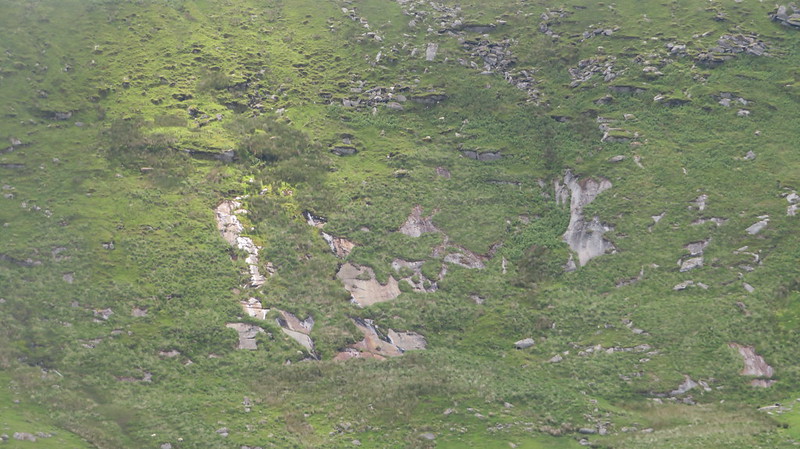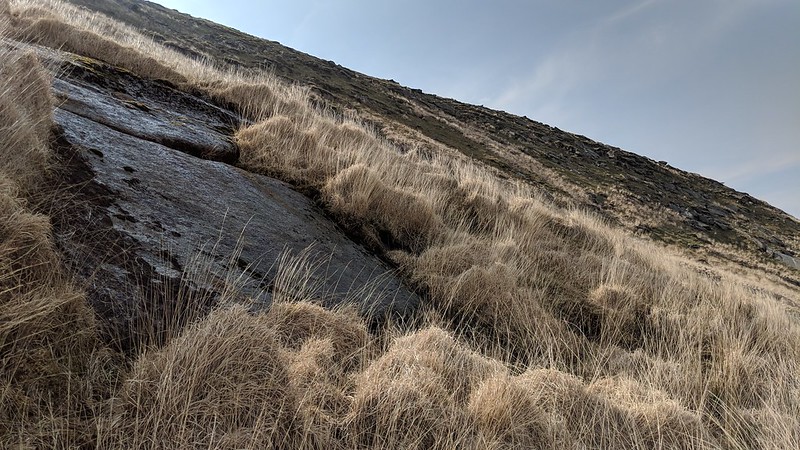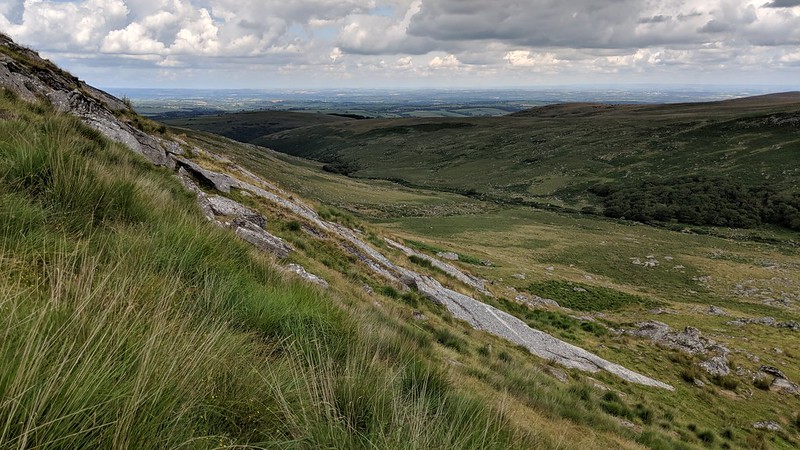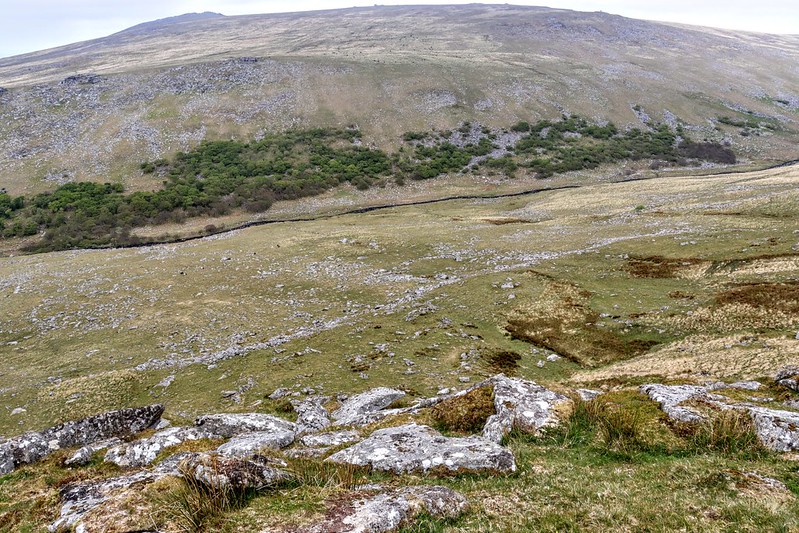TORS OF DARTMOOR
a database of both lesser- & well-known rocks and outcrops
Slipper StonesSlipper Stone Hill
 First reference we have found dates to 9th May 1884 in the Western Times under the title 'The Fulford Hounds'. Whilst describing the run of a fox in the Okement area, we learn that it ran "up the steep Slipper Stone Hill". Briefly mentioned in 1902 and 1905, by William Crossing, it isn't until 1909 that he provides a description; "It forms a kind of huge amphitheatre, above which are the masses of granite called the Slipper Stones." Often mistaken to be the obvious line of granite rocks strewn along the West Okement Valley, the Slipper Stones are actually higher where the valley side steepens and there are sections of exposed smooth granite that are often wet and 'slippery'.  The smooth wall is evidence of a small glacier, the granite ground by its slow movement down the valley. This is further supported by the aforementioned lower line of rocks that are the remains of a glacial moraine that was unceremoniously dumped here when the huge body of ice melted. Recent studies have suggested that Dartmoor was its own independent ice cap, detached from the rest of the UK, with the northern part of Dartmoor being subject to the early stages of glaciation during the Quaternary Period. Whilst the Slipper Stones are best viewed at their feet, the clearest view of the moraine is to be had from the ridge above and from across the valley at Black Tor and Fordsland Ledge. The area is an amazing location to admire the epic nature of this 'wild' valley where it has created a varied and broad landscape unlike most Dartmoor valleys.  It seems that Slipper Stones was once a disputed Parish boundary of Okehampton. Under the heading 'A Dartmoor Comedy' in the Western Times newspaper of June 11th 1909, we have an account of a Beating the Bounds ceremony that included a visit to the site and was attended by a large number of the Parishioners of Sourton and Bridestowe. Around 1901 a group of Okehampton Beaters had graven the initials OPB onto the Slipper Stones and this act was deemed unacceptable by neighbouring parishes, the extract reads "Now Bridestowe or Sourton or both (probably both) immediately objected to this tacitly established boundary of Okehampton. They claimed that Okehampton had exceeded their frontier limits and they forthwith gave notice to that parish that on such and such a date the inscribed initials would be chiselled out of the rock". However, following the removal of the letters they later reappeared on the very same stone but now were picked out in mud. Two members of the party of 1909 brothers J and S Worden, set about removing the marks once again but were interrupted by six gentlemen on horseback from Okehampton. An altercation ensued and one of the brothers was pulled away but once the horsemen viewed the one hundred and fifty people approaching the Stones, they thought better and retreated. 
| ||||||||||||||||||||||||||||